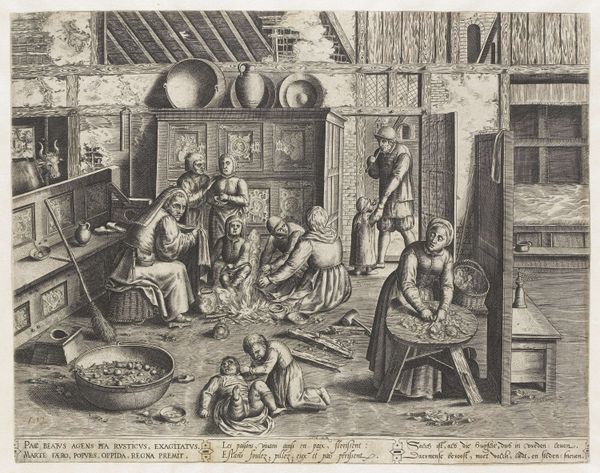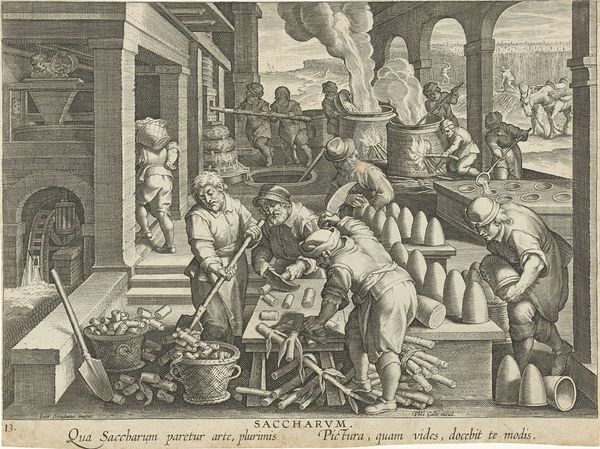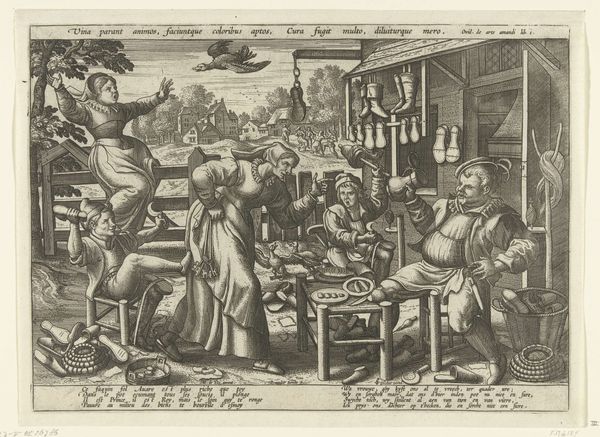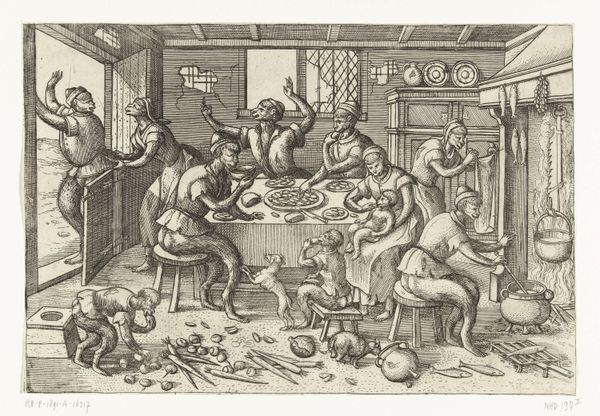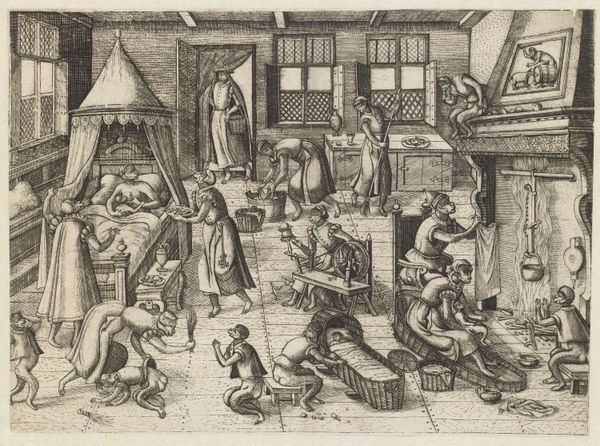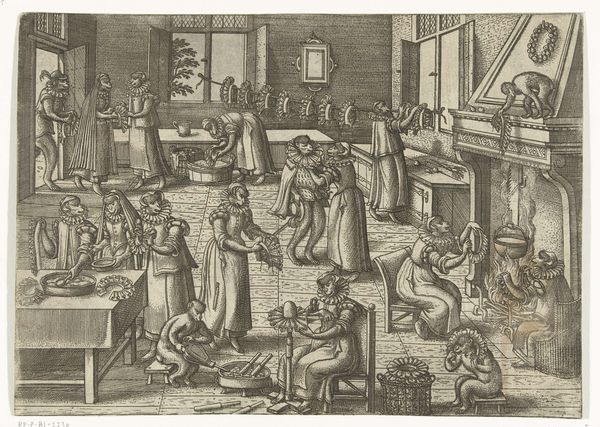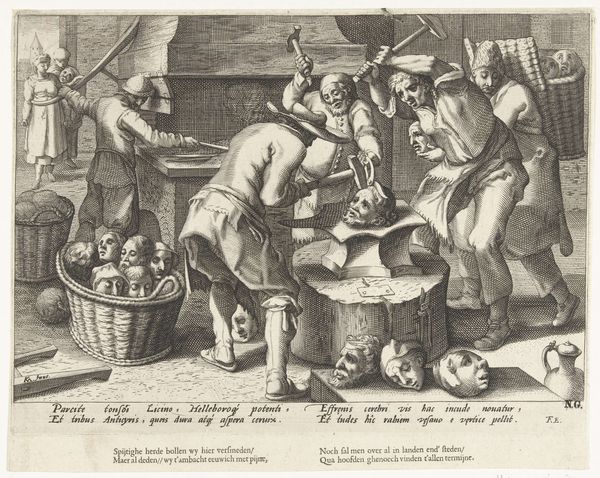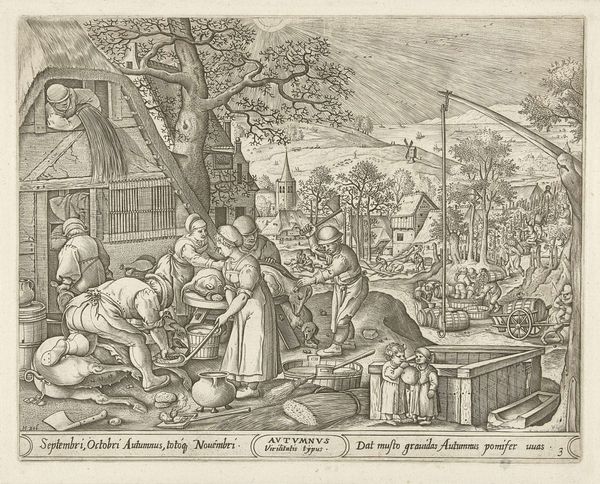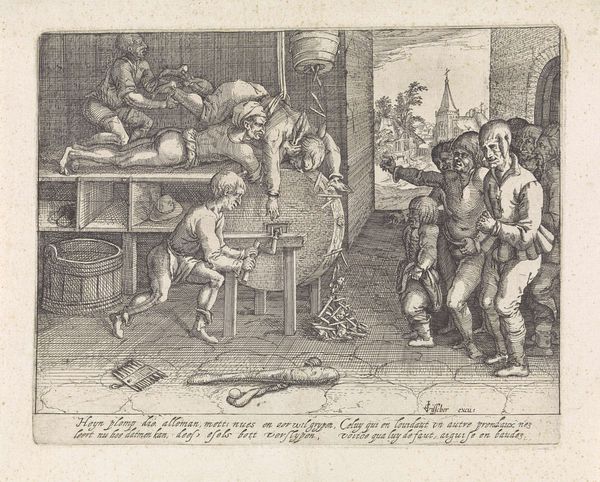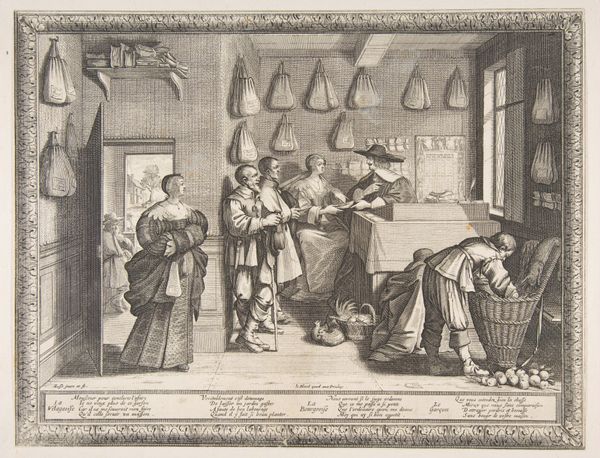
print, engraving
#
baroque
# print
#
landscape
#
genre-painting
#
engraving
Dimensions: height 202 mm, width 275 mm
Copyright: Rijks Museum: Open Domain
Curator: Let's talk about "Olive Press," an engraving made around 1598 by Jan Collaert the Younger. It resides here at the Rijksmuseum. Editor: Immediately, I notice the sense of rhythmic activity – all those repeated circular forms of the millstone, the barrels, even the pots for collecting the oil – it feels very dynamic. And the subdued tonal range enhances the quiet, almost meditative quality. Curator: From my perspective, I am interested in the machinery illustrated so painstakingly and also the human element in production: the laborers, animals and their actions, coordinated towards the production of oil. What was once, no doubt, laborious, becomes abstracted in Collaert’s hand. Editor: The way the artist uses light and shadow draws me into the individual stories unfolding. I see that this place isn’t simply a factory, the architecture and figures grouped in ways evocative of biblical paintings makes it seem rather sacred somehow, as if blessed. Perhaps because it’s such a valued product. Curator: Precisely. Think about how olive oil features in ritual, both sacred and domestic, even now, and you understand Collaert capturing a crucial food and, therefore, power source through print. Moreover, I find the division of labor noteworthy—some figures operate the press, others collect the product, still others are tasked with transport via donkey and ox. We are witnessing production and exchange illustrated. Editor: Right, I see what you mean. All the iconography connected to sustenance… it’s subtly present. But even removing that idea, one can’t overlook the feeling of deep labor embedded in the entire scene, an old order of things with established social positions made accessible to a wide audience. Curator: The materiality of it all—the press itself crafted of wood and stone, the baskets, the clay pots… all rendered beautifully through engraving to highlight labor through commodity exchange and to be exchanged. Editor: A fascinating confluence, ultimately. Curator: Indeed. The artwork provides not just a record, but also an economic story ripe for deeper discussion and research.
Comments
No comments
Be the first to comment and join the conversation on the ultimate creative platform.
